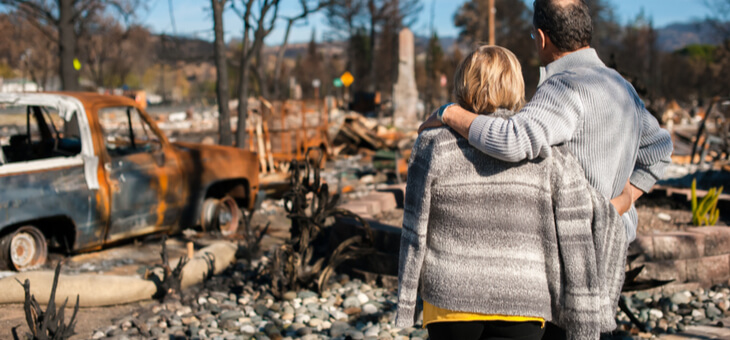Australians may be used to bushfires and floods, depending on where they live, but this year has also seen earthquakes and tornadoes join the list of natural disasters we can expect.
It seems an age ago now, but in March, flooding in NSW forced 18,000 people to evacuate with heavy property damage suffered by large parts of Sydney’s west and the mid-north coast.
Then, in September, Victoria recorded a 5.8 magnitude earthquake, the largest in the state in nearly 200 years. The epicentre of the quake was near the regional town of Mansfield, about 150km east of Melbourne.
Read: Your default super cover could be lacking
Also in September, residents in the areas surrounding Bathurst had to deal with a clean-up and property damage after a tornado tore roofs off homes and knocked down trees and powerlines.
The increasing frequency of natural disasters in Australia, begs the question of whether your insurance will cover you for these events, and whether you need this cover.
In the wake of the earthquake, Finder insurance specialist Taylor Blackburn checked 11 of the most popular home insurance policies and all of them included cover for earthquakes.
Read: What good news on crime means for your insurance costs
He explained that if you have insurance cover prior to an event, then you should be covered for natural disasters such as earthquakes.
However, those who don’t have cover at least 72 hours prior to the event, won’t be covered for any damage caused.
“Most policies have exclusion periods for specific insured events such as a quake to prevent people from simply taking out a policy just before damage occurs,” Mr Blackburn explained.
Read: Leading insurer to offer $35m in premium refunds
He said that if you need to make a home insurance claim after a natural disaster, there were three steps that you should follow.
Firstly, ensure that the property is safe and secure. You may need to call 000 or the SES. Once you have secured the property you should call your insurer and let them know what has happened and they may be able to send out an emergency tradesperson if you require immediate assistance.
Secondly, you should collect evidence, taking as many different photos and videos of the damage as possible. You should also collect receipts and invoices for damaged items to prove your expenses.
The final step is sending all of your evidence to the insurer.
“Once you’ve collected all the evidence, you can submit your home insurance claim,” Mr Blackburn said. “You can usually do this online or by mail.
“It usually takes insurers up to 10 days to respond to your claim.”
He said that a really large natural disaster was likely to result in multiple claims, so in some situations it could take longer than 10 days to process.
Have you ever had to make an insurance claim after a natural disaster? Were you happy with the process? Why not share your thoughts in the comments section below?
If you enjoy our content, don’t keep it to yourself. Share our free eNews with your friends and encourage them to sign up.

